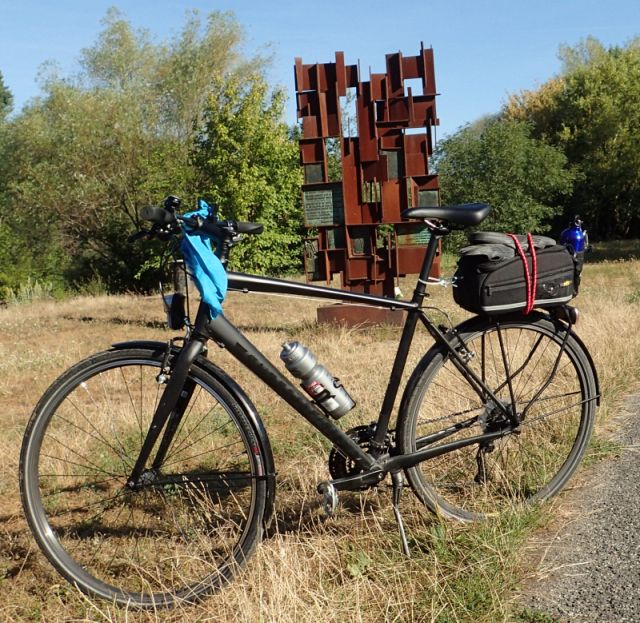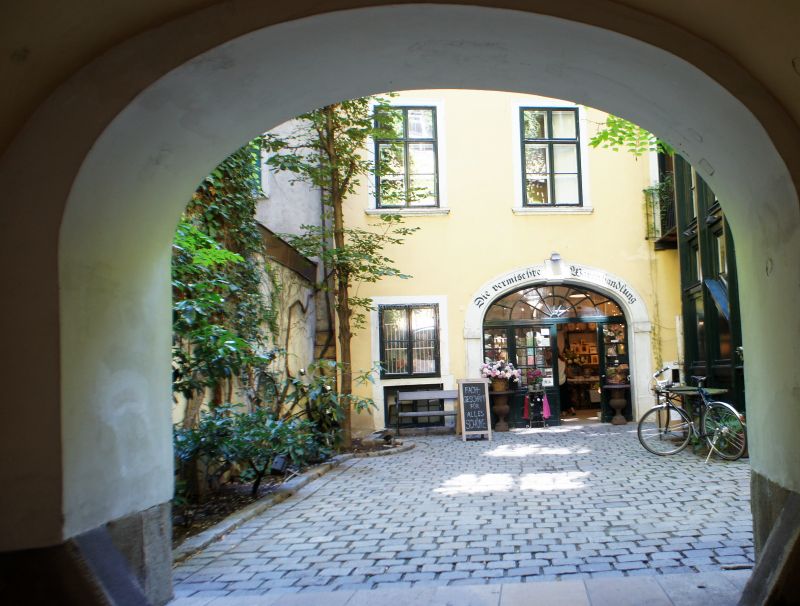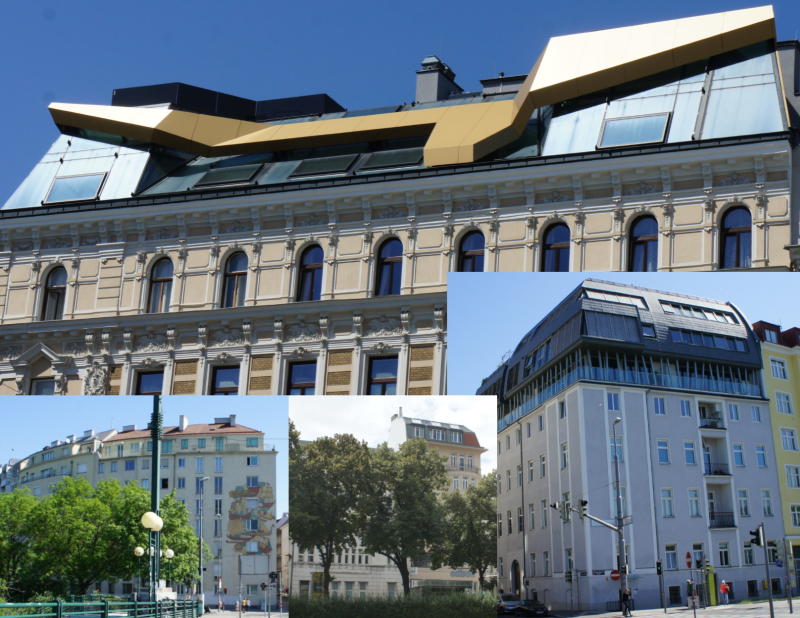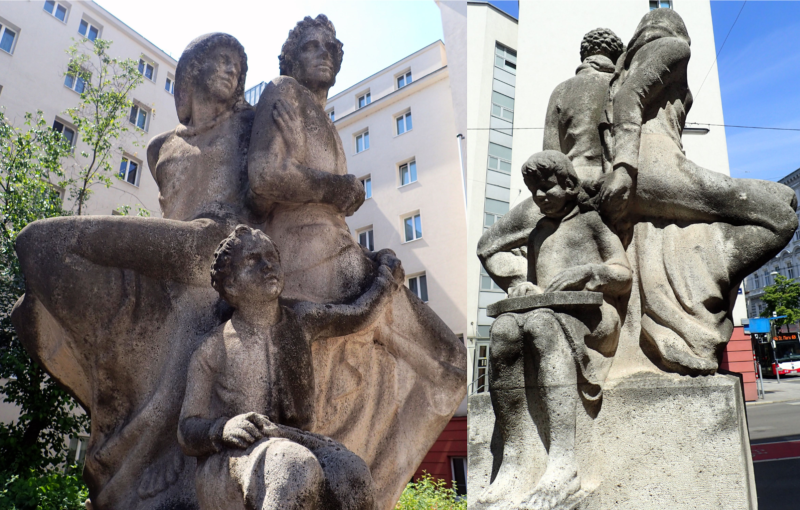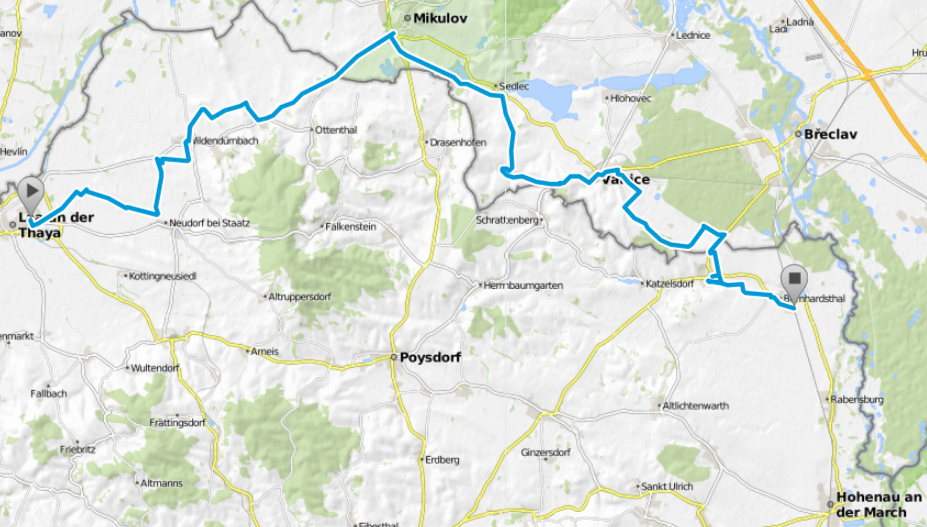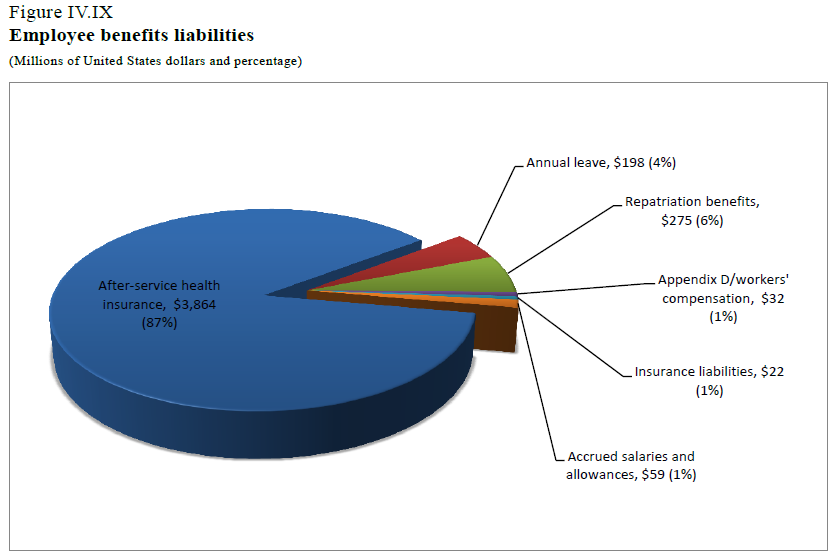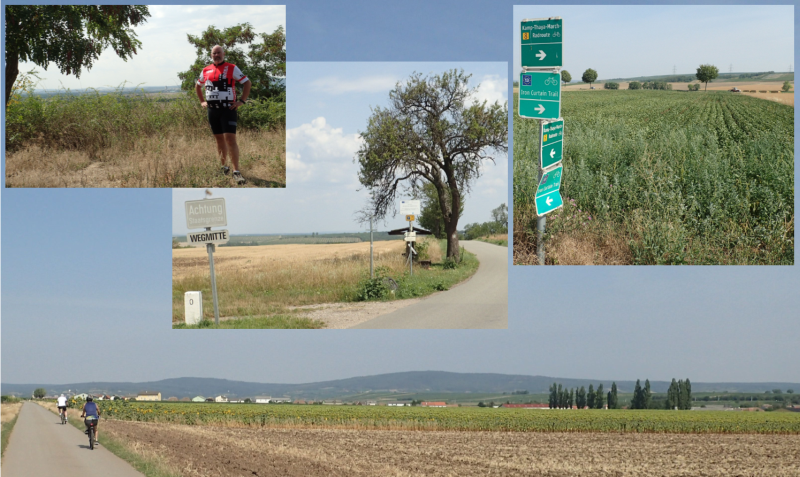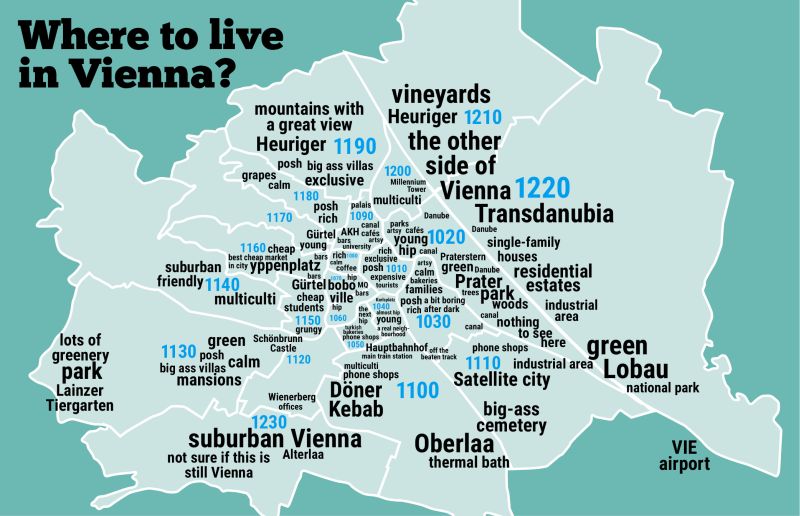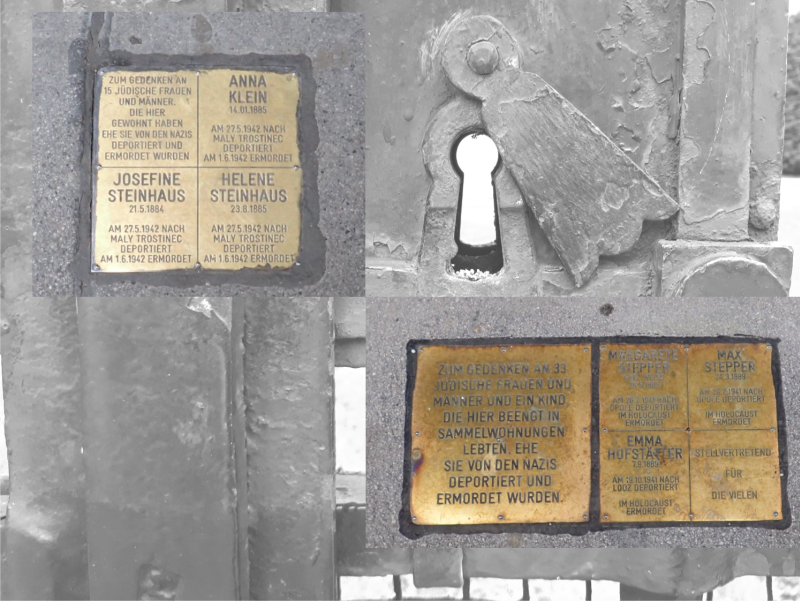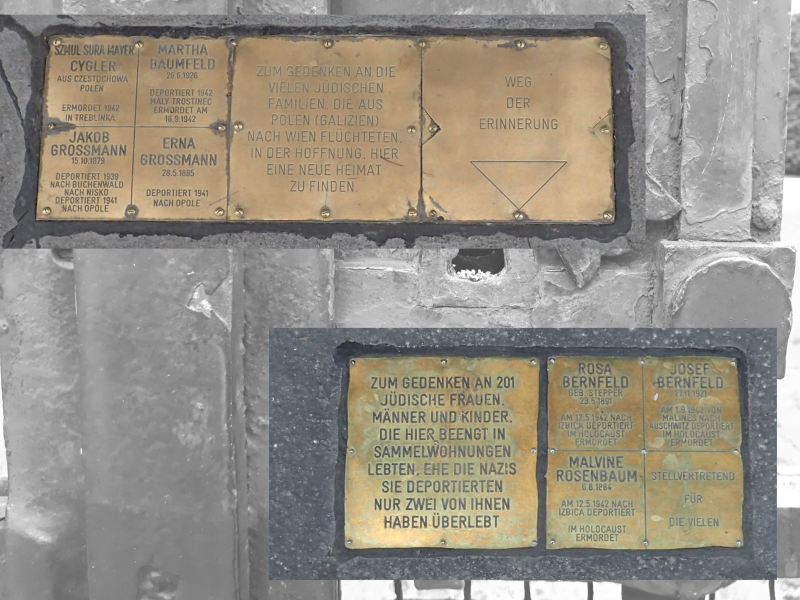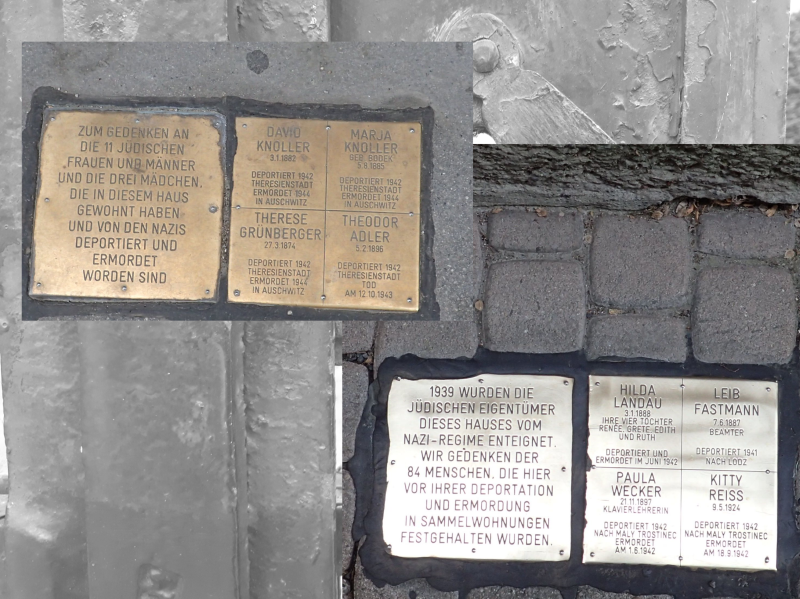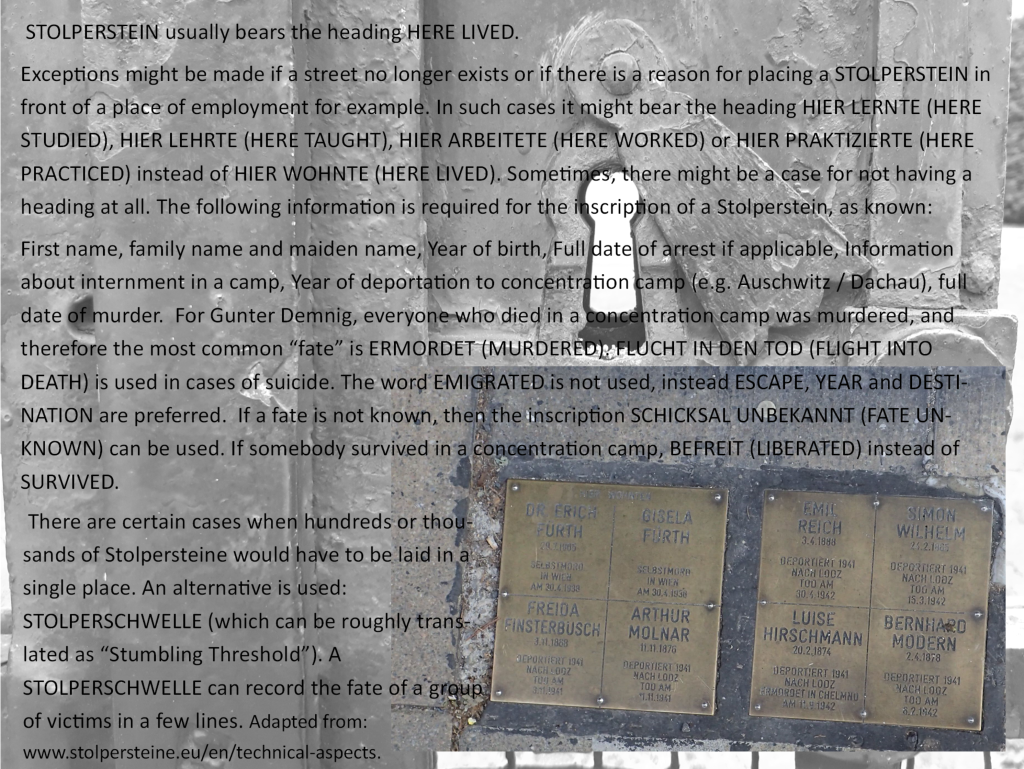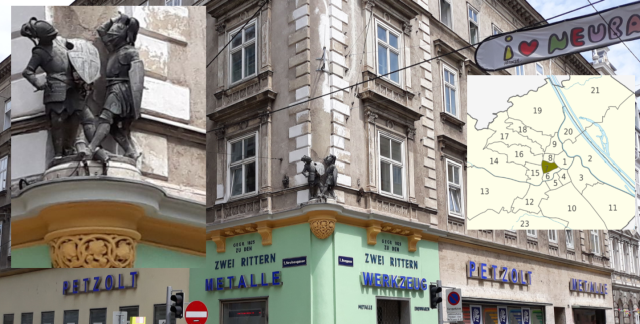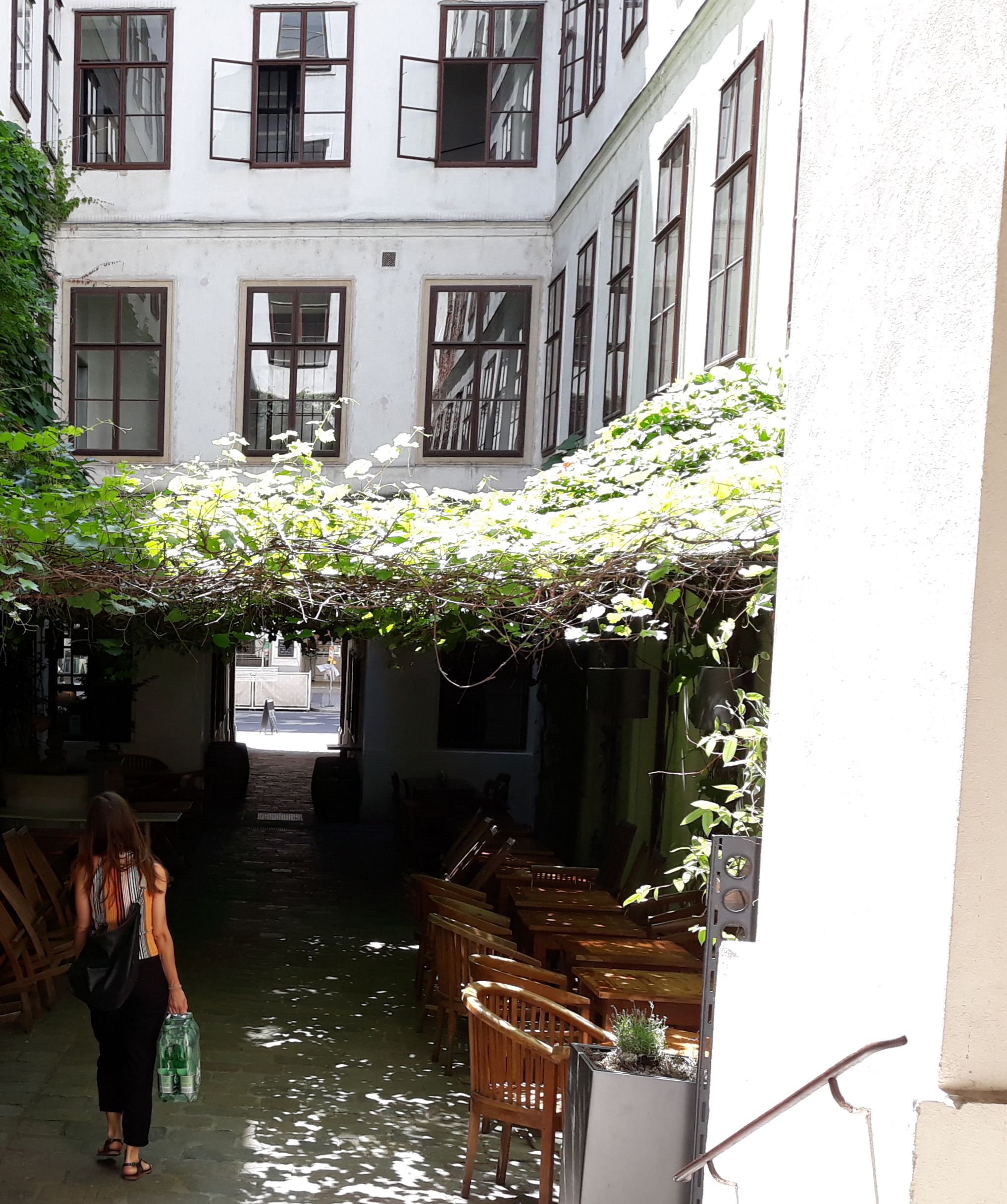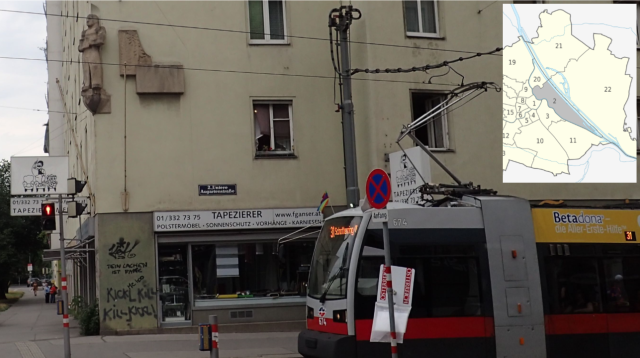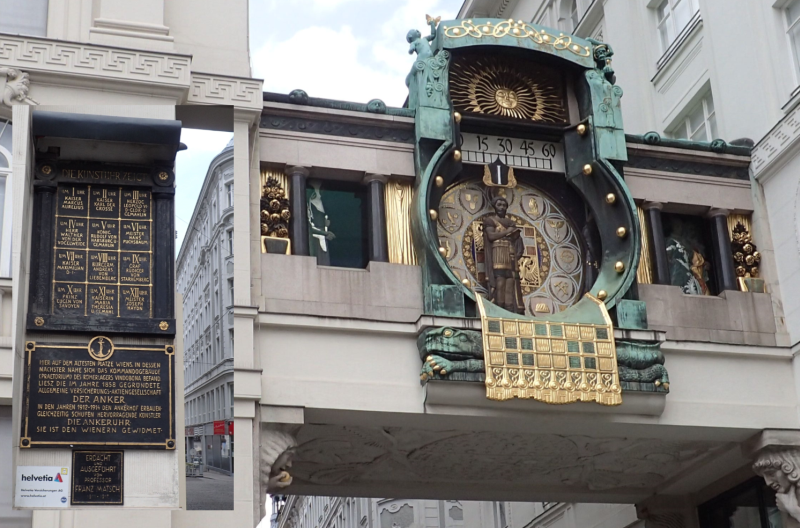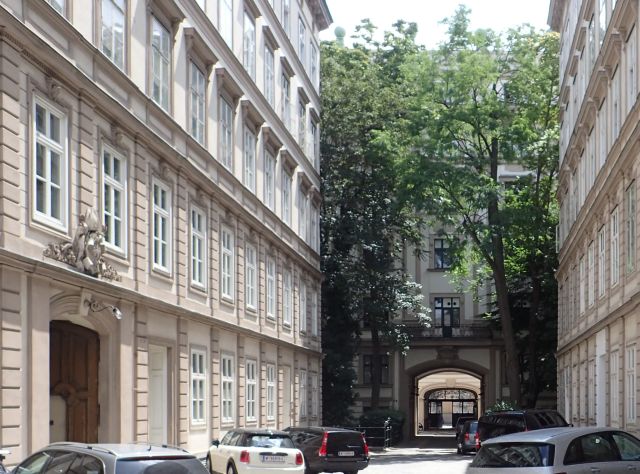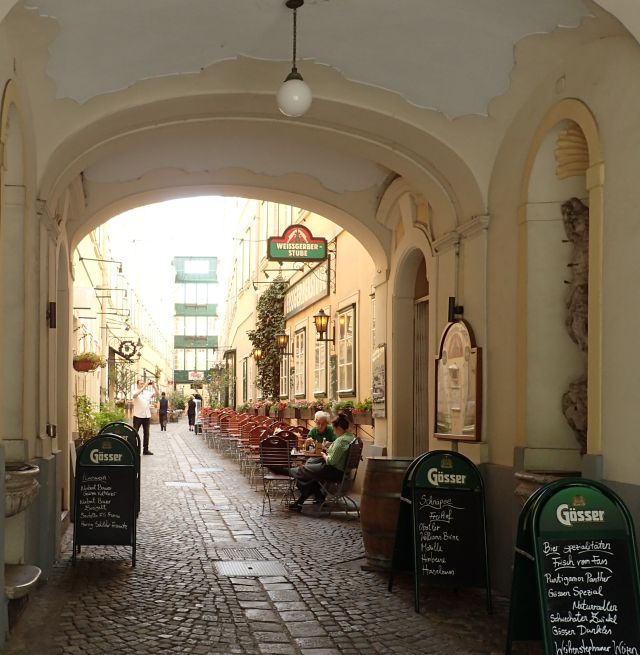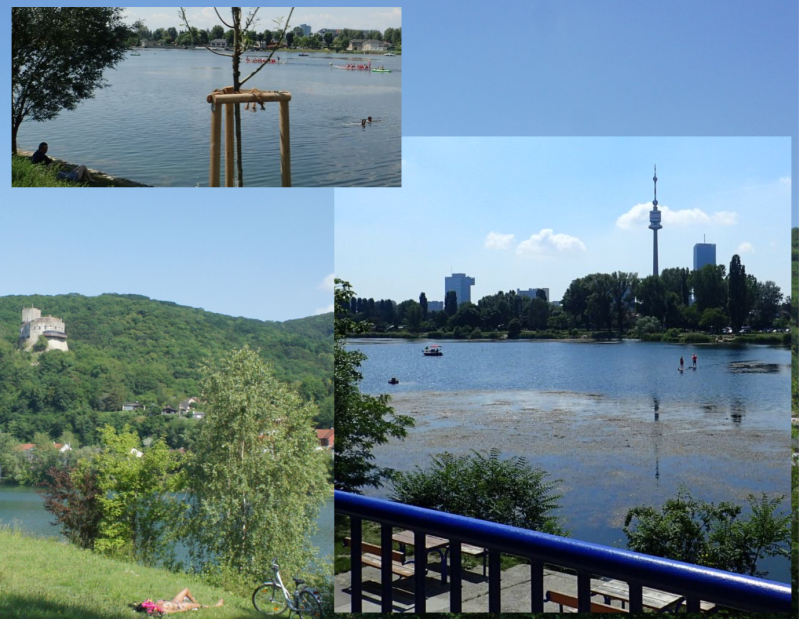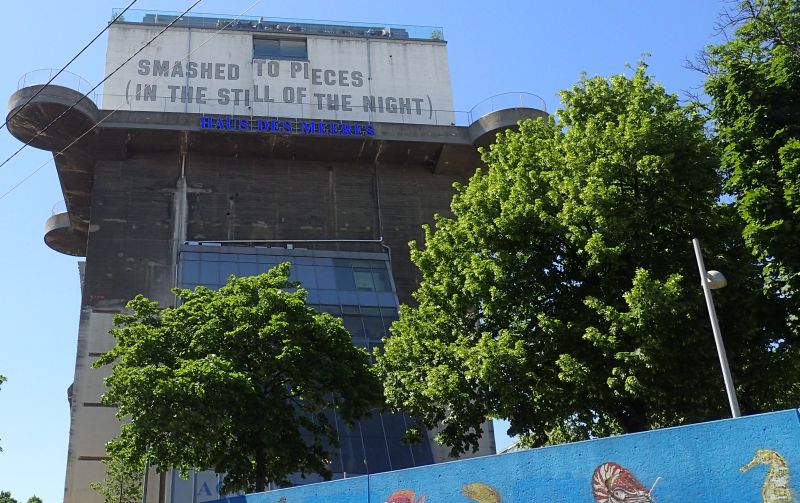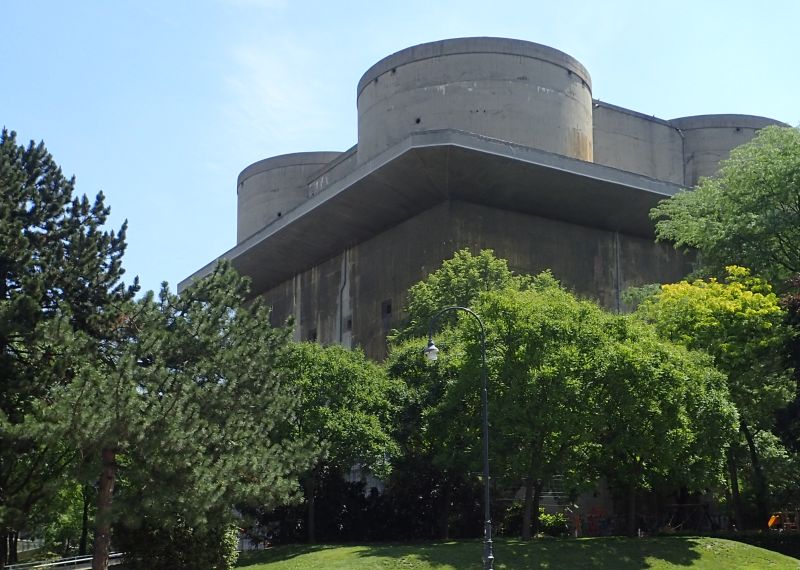Based on a promise to ‘Pay Attention‘, this is one of six blogs with the good intention is to publish a photo a day of my six month adventure in Vienna with a caption and thoughts on the image. Be patient and wait for the pictures load. Also because July is a thematic month, it is best to view the images from the bottom to the top.
Theme for July: Vienna is divided into 23 districts each with its own name and corresponding number (see this interactive map from the City of Vienna). For us North Americans used to a grid based city, this system can be confusing as people with assurance talk about the 9th and 10th districts although they are no where near each other. For this photo-blog I may visited each district either in July or previously.
| District |
Date |
District |
Date |
District |
Date |
| 1st |
July 31 |
2nd |
June 18 |
3rd |
July 27 |
| 4th |
July 24 |
5th |
July 25 |
6th |
May 12 |
| 7th |
June 21 |
8th |
July 8 |
9th |
July 9 |
| 10th |
July 10 |
11th |
July 11 |
12th |
July 12 |
| 13th |
July 13 |
14th |
July 14 |
15th |
July 15 |
| 16th |
July 16 |
17th |
July 1 |
18th |
July 18 |
| 19th |
July 19 |
20th |
July 20 |
21st |
July 21 |
| 22nd |
July 22 |
23rd |
July 23 |
|
|
The first district to visit?. Why the 17th of course! Selected only for its very punny connection to Canada. But first an overview courtesy of a tongue in cheek community character map ‘The Vienna Expat survival guide: 13 ultimate tips for internationals moving to, or living in Vienna‘.
July 31: 1st District, the first and most central area occupying the last place in the month of July. I took one afternoon a tried to find streets I had not yet travelled. The results are (top left, clockwise): A mural commemorating a 750 year anniversary, Figlmuller – a fixture of the tourist trade, a wall mural, a statue on an art nouveau style building, idealized men on the same building, a wall mural nearly 300 years of an abby and finally the tragic figure of Emperor Franz Josef.

Six images of Vienna in the 1st district.
July 30: This picture is taken from where the Danube Canal separates from the main stream (top left) and an irrigation canal (top right), Marchfeld, starts its journey through agricultural land to return to the Danube just before Slovakia. To make the scene a bit more full throw in a few boats, a S-Bahn city train, a bridge supporting a major thorough fare and my bike just by one of the well marked cycling trail heading north out of Vienna (phew!).

A Picture is worth a 1,000 ways to travel… or something like that.
July 29: These are two separate example of social housing, public art and a feature of Viennese architecture – The building spanning the road. I decided to superimpose these two images as a comparison between a social housing project built in the 1950s and another built in the 1980s (back and fore ground). A consistent architecture feature is the raised building over the road entrance and then an inner courtyard (look carefully for the bike).

Old and newish public housing, street art and a bit of graffiti for good measure.
July 28: I don’t normally go too much into gimmicky photographic tricks but in this case I put my camera on an art mode by mistake and end up liking the results. Below are both images, one gimmicky and one normal.

A loan tree but with an artistic sky.

A lone tree sans gimmicks
July 27: Vienna has not one but two big friggin’ towers. The taller of the 2, the Danube Tower can be seen in the pictures from July 22nd below. The more mysterious is the the one lurking in the 3rd District where it dominates the skyline. According to the newspaper, Wiener Zeitung, requests to visit the tower are refused and little information is known about. Nevertheless one can visit by watching the Vienna. City Panorama Web Camera from the A1 Radio Tower/Arsenal Tower.

Vienna’s second tower, a building mural and the St. Nikolaus Cathedral (Russian Orthodox).
July 26: A little bit more from the town of Baden which was having a Weiss or White festival. Never before have I seen so many people in white and never has tomato based pasta sauce yearned to leap from nearby plates so much so as to colour those nice white clothes.
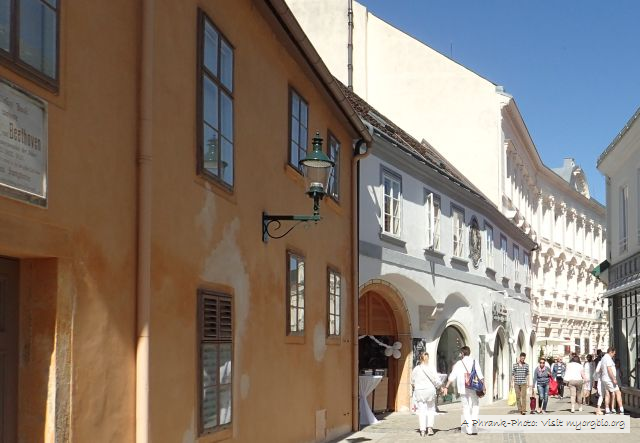
Weiss festival in Baden
July 25: The last time I lived in Vienna, I constantly rode through the 5th District and then later looked at it from my apartment windows. The district sprung up along the Vienna river and individual communities were amalgamated into one. If you look at the insert photo you will see Margaraten Street heading east towards Vienna. This is exactly what many small Austrian towns look like, buildings built right to the main street.

A classic building on Margareten Street and an insert of the same street show how it used to be a main street running towards Vienna.
July 24: the 4th District is in the SW corner and includes lots of residential areas. It also includes Karl’s Church and a monument given to the Austrians by the Soviets on the occasion of the withdrawal of occupying powers from Austria in 1955.
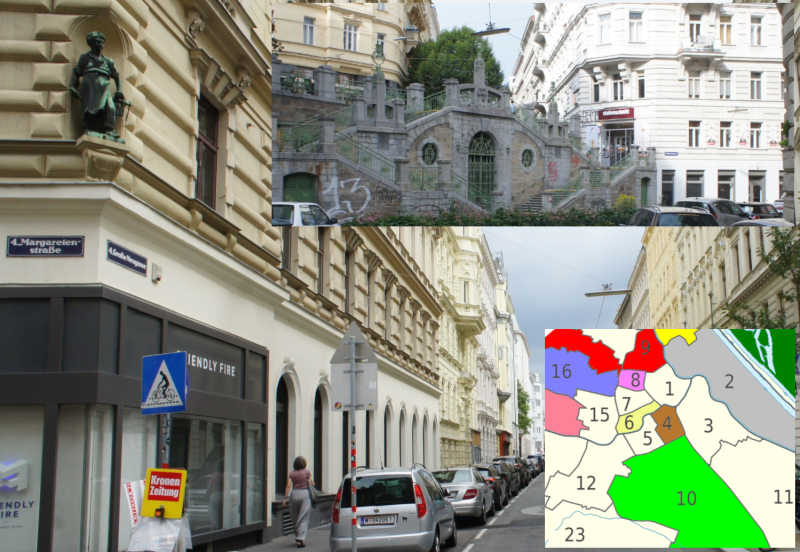
Building upon building of residential areas and a stair case to manage a change in gradient.
July 23: The last district in Vienna is the 23rd which is also the transition into the Vienna woods and beyond the Alps. The apartment building is the Wohnpark-Alterlaa which is a social housing complex that is essentially a small city within a city.

The Liesing or 23rd district complete with a city within a city complex.
July 22: The 22nd District is an interesting blend of shiny office towers, the UN Centre, car dealerships, suburban homes and recreation. It includes a national park along the Danube and is the largest of the districts. Lots of water sports on the Alte Donau.
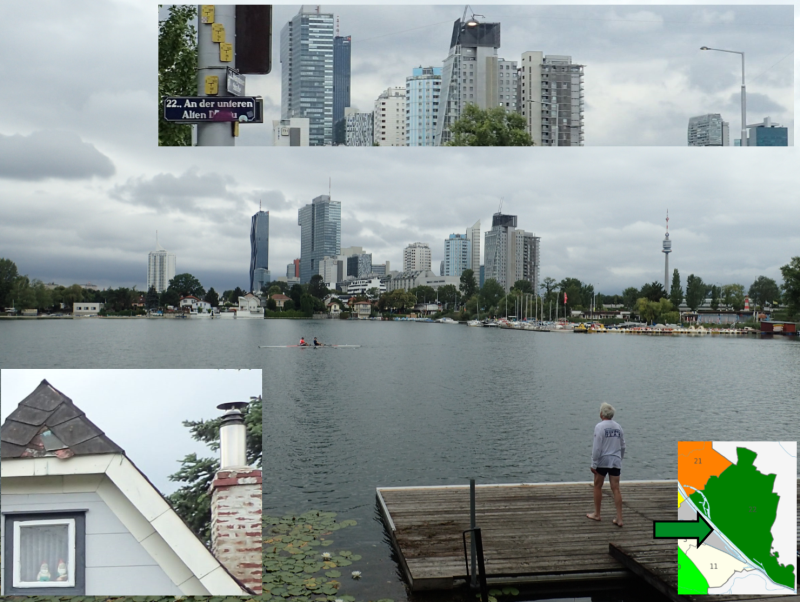
22nd District, Office Towers, Neighbourhood PaTROLL.
July 21: The 21st district is the sister to the 22nd bordering the Alte Donau (old Danube, a former channel of the river). It has a more urban feel though with seemingly more social housing (such as the mosaic shown here) and numerous cement block apartments. For a bit of whimsy a street art in the insert.
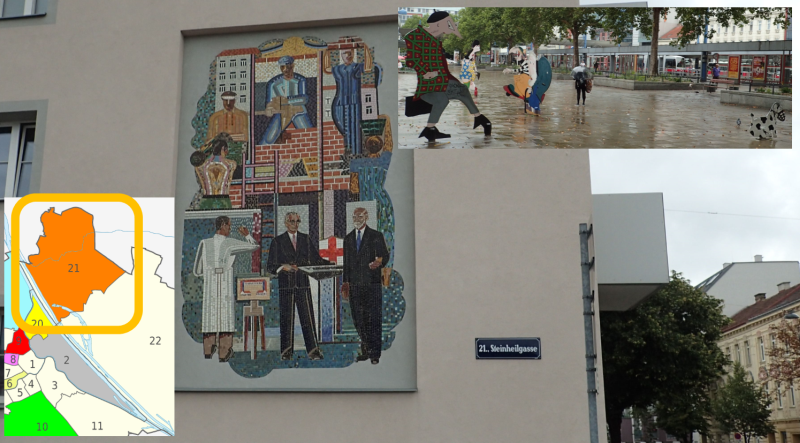
21st Vienna District. Note that street art in the top right corner.
July 20: Two street scenes from the 20th district. What I like about these pictures is that the business names are all in German. Many current Austrian businesses have English names where as these are not only German proper nouns but descriptive nouns as well Wascheri+Putzereri (washing), Möbel (furniture) and angelsport (finding devine creatures).
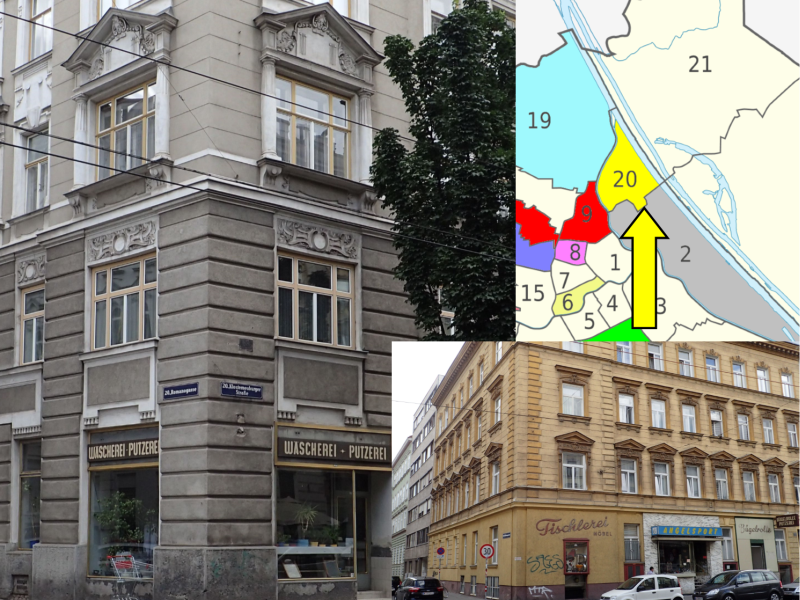
Vignettes from the 20th District.
July 19: A few different scenes from the 19th district. the background is a social housing complex built during the occupation years. In this case the building was built in the US occupation zone. In laid is a corner statue from another building.

Statues from the 19th District.
July 18: 18th District. The original city rail road with an Otto Wagner style bridge. If you notice below the bridge, a shuttered business which is common along the railway as this seems to be an area of lower income and homelessness. In contrast, a neighbourhood bakery does a brisk business on a Sunday morning.
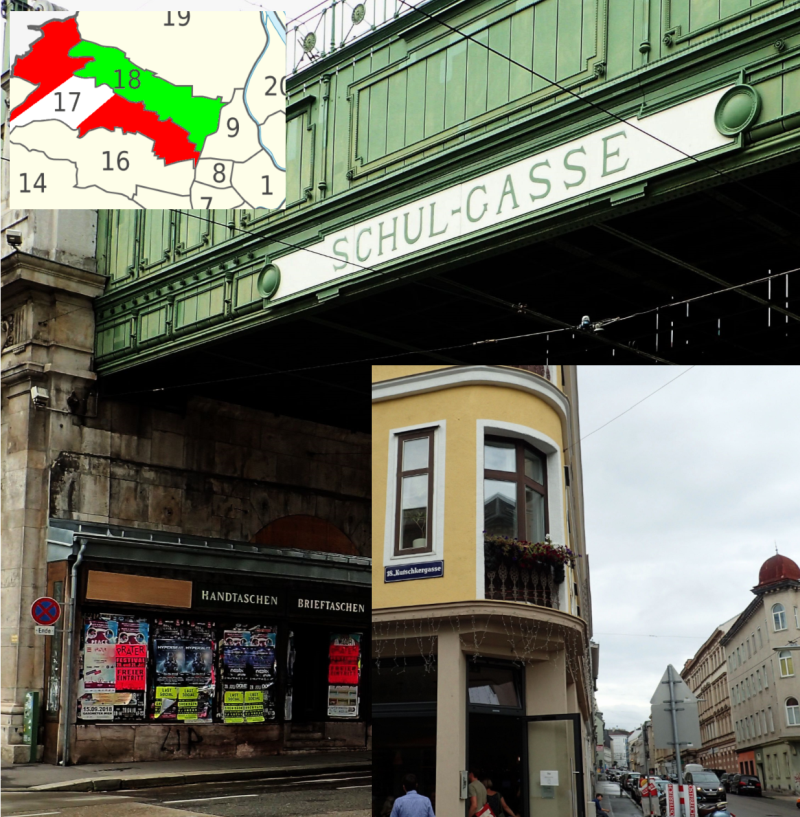
Two contrasting scenes in the 18th district.
July 17: A look into an inner courtyard of a social housing complex. The inner courtyard keeps the complex cool in the summer and provides a place for kids to play and tenants a place to socialize.

Iron work looking into an inner court yard.
July 16: A large social housing complex built at the height of Red Vienna in the 16th district. It has both an imposing and appealing look at the same time with a touch of art deco decor.

Schuhmeier Hof built ca. 1926-27
July 15: The 15th was once considered a dodgy neighbourhood. My experience so far is enjoying an excellent lunch at a combination bicycle shop/bistro called Velobis. Note the tree sculpture in the corner of this building and that one side faces the 15th district and the other the 13th.

A tree sculpture in the 15th.
July 14: Lots going on in this picture from the 14th district. In the background is a long narrow road radiating to/from Vienna and likely an older country road. Bottom left are the trains heading west out of the West Bahnhof towards Munich, Salzburg, etc. The hills in the background are the start of the Vienna woods (Wienerwald). Top right is a more classic building in Vienna with a pub on the main floor. The treed area to the left is a small beer garden – a place to escape the heat of the apartment!

14th District vignettes
July 13: One source describes the 13th district, Hietzing, as the “Austrian Empire Theme Park” with the former hunting grounds (Tier Garten) and the Schonbrunn Palace. Even the Hietzing U-Bahn Station are fashioned in Otto Wagner style.

U-Bahn station a la Wagner, Schonbrunn and lots of greenery describe the 13th.
July 12: The 12th district is also highly residential. This image has a number of classic European and Vienna images. Firstly the mosaic on the side of the overhang of the building. The Zu Kaufen sign is offering the corner apartment for sale. Finally, the business in the image is for a flooring company. A relatively common business because of course when you move out you take the floor with you (as well the cupboards, etc.).

The 12th district mosaics, business and an apartment for sale!
July 11: The 11th district is generally residential but does have the huge Central Cemetery. Within the cemetery is the Friedhofskirche zum heiligen Karl Borromäus, which has strong Art Nouveau features. Near this church is a large section dedicated to the Red Army and their losses taking the city in 1945. (The Central Cemetery is so large the Viennese describe it as ‘having half the population of Zurich where people have twice as much fun as Zurich’.

Interior of the large art nouveau church and a sculpture of a grieving soviet soldier with a Red Army star behind him.
July 10: Two examples of public art, both in the 10th district and all for July the 10th!
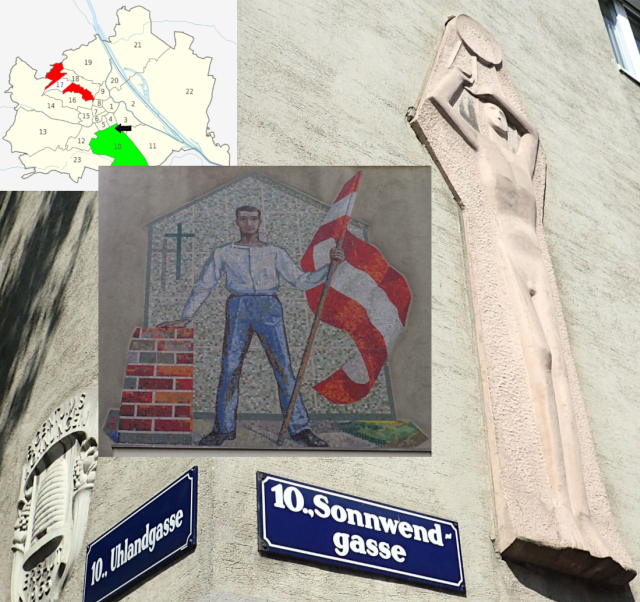
Mosaic and a Sculpture in the 10th district.
July 9: The 9th is my “hood and where I live. Some public art in the local buildings and the corner of my apartment. The bad news is that the door is on the left hand side of this corner although my balcony over looks the right – a very appropriate view.
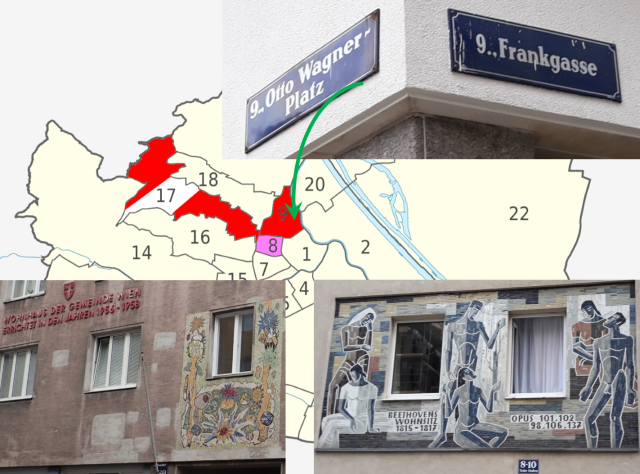
Some views of the 9th district
July 8: From the Eight District, three different street scenes starting top left an inlaid sculpture, bottom right more inlaid sculptures and an older style street name sign in Gothic script and on a building where Beethoven lived and worked in 1819-20 and finally, a street sign shop… where all of these street signs come from!

Beethoven, sculptures and a shop selling street signs – all in the 8th district.
July 7: Before we leave the Votiv Kirche, a detail and the view from my apartment balcony (two for one week!).

West Door of the Votiv Kirche. Note the Adam and Eve motif over looked by the saints.

Looking east to the Votiv Kirche from my apartment balcony.
July 6: Near my apartment is the Votiv Kirche and in a back corner in an art piece dedicated to Vivaldi and entitled “AD ANTONIO VIVALDI” and organized by the Lions Clubs of Vienna and Venice. Two detail headers from this piece.

AD ANTONIO VIVALDI: Detail

AD ANTONIO VIVALDI (Detail)
July 5: Unlike many North American cities, Vienna is very much a train dependent city and has 3 separate stations. For those train watchers out there, Wien-Meidling Station looking north towards Vienna.

Wien-Meidling Station, the hardes friggin’ station in Vienna to find!
July 4: Happy 4th of July to all friends from the United States! This monument is about 100M from my apartment and I walked by it for 2 months thinking it was a traffic control box. The inscription is reproduced below and it was presented on June 17, 1948 at Bedford Indiana to the Stone City of the world (Vienna presumably). Based on some basic Google research:
Demokratiezzentrum (translated from German): Monument on the Frankhplatz in Vienna, which was dedicated to the city of Vienna in 1948 by the USA. The memorial bears the following inscription: “This cornerstone of freedom presented June 17, 1948 at Bredford, Indiana, USA, the stone city of the world AUSTRIA.” Austria’s importance for western civilization transcends by the geographical size of the country Indeed, Austria may be regarded as the heart of the European Commonwealth, Presented by Indiana Limestone Company Inc.”
From the Historical Marker Database: On this spot June 17, 1948 as a part of the Indiana Limestone Centennial Cornerstones of Freedom were given to representatives of 17 friendly Nations in one of the most impressive displays of International good will ever manifested anywhere in the World. Countries given markers include: Austria, Belgium, Burma, Canada, Denmark, France, Great Britain, Greece, Honduras, Iran, Italy, Liberia, Lithuania,Norway, Philippines and Saudi Arabi (Sic).
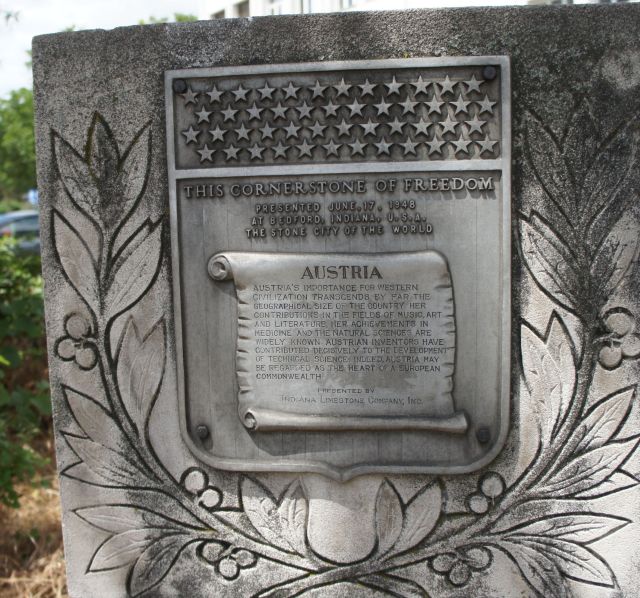
One of a series of limestone markers distributed by the Indiana Limestone Company in 1948 on the occasion of their 100th anniversary.
July 3: A little bit more of the bathing culture…

Cabins in the upper deck of Bad Vöslau.
July 2: The Vienna area has a strong ‘bathing-culture‘… okay beyond good basic personal hygiene this also involves a German propensity to go swimming in lakes and rivers as well as a number of thermal baths. A few pics from the larger Vienna area (include Baden and Bad Vöslau) which share in the tradition of coming clean with a leisure activity.
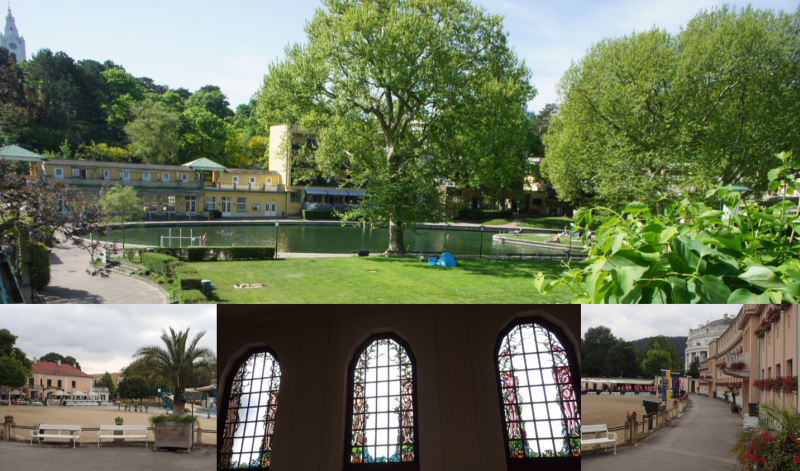
Images from one of the pools in Bad Vöslau and in Baden.
July 1: Happy Domain (errr, Canada) Day. Don’t worry non-Canadians if you don’t get it.
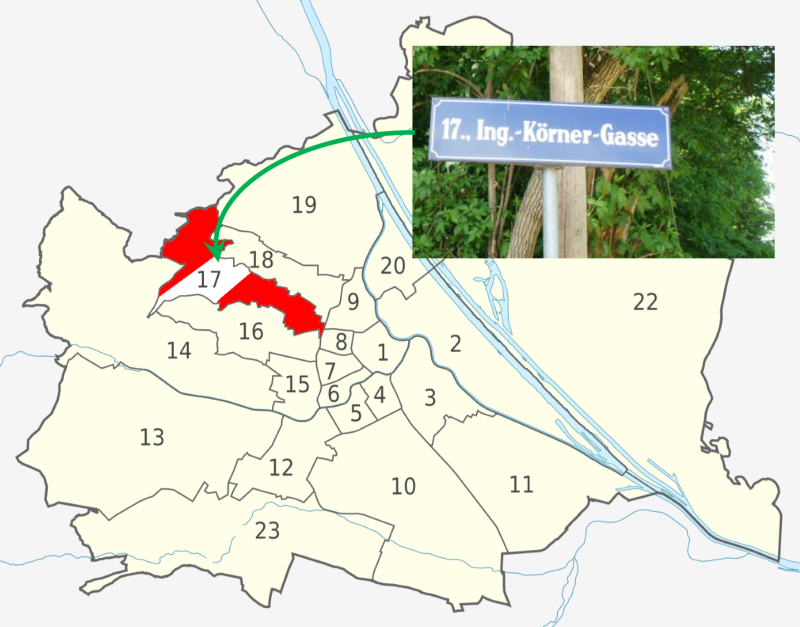
Korner-Gasse in Vienna (sorry Brent was no where to be seen).











